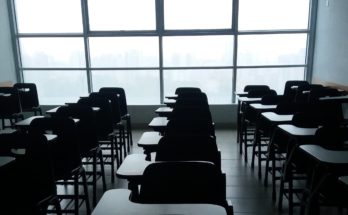 “Saved by the bell” has become almost a cultural cliché, conjuring an image of students anxiously eyeing the clock, waiting to be released from another day of school. But at some institutions, that daily countdown is getting longer and longer. Extended hours have become a hallmark in New York’s charter school network – just as the longer school day and year are becoming increasingly popular at public schools as well.
“Saved by the bell” has become almost a cultural cliché, conjuring an image of students anxiously eyeing the clock, waiting to be released from another day of school. But at some institutions, that daily countdown is getting longer and longer. Extended hours have become a hallmark in New York’s charter school network – just as the longer school day and year are becoming increasingly popular at public schools as well.
This winter, however, New York City’s Success Academy network, which operates over 30 charter schools in the area, decided it would be reducing its hours in the 2016-17 school year. In a recently released memo, school officials said hours would be cut from nearly nine hours per day to just eight at the elementary level, and from nine to seven-and-a-half at the middle school. The well-known charter network, founded a decade ago by education reformer and former city council member Eva Moskowitz, cited teacher and student dissatisfaction as the reason for the cutback, according to the internal email published by Politico in December.
Since the organization’s inception, Success Academy schools have built their reputation on high student achievement, which was partially a result of reforms like the longer school day, according to the administration. Success’s press office refused to comment for this article.
“The extended day becomes a slogan. It becomes a brand for some of these charter schools,” said David Bloomfield, Professor at Brooklyn College and the City University of New York Graduate Center. “The charter movement gets a lot of traction off of simple, positive phrases like competition, choice, accountability. So, just add ‘extended hours’ to that and whether its Wal-Mart or whether it’s KIPP, it just sounds good.”
Bloomfield said charters are distinguishing themselves from public schools with that branding. The idea, he said, is to build a narrative around charter reforms as the most effective path forward for students and schools.
Of course, it is not just charters that have touted the benefits of the longer day. Other schools have adopted the practice of extending their school day beyond the standard five and a half instructional hours set forth by the state Department of Education for secondary school students. Mayor de Blasio’s Renewal Schools plan, which targets underperforming schools with specific reforms aimed at turning around academic achievement and school culture, also calls for a longer school day as one of its key tenets. In the city’s plan, its 94 Renewal schools all have an extended day. In addition, there are 193 extended-hour schools in the state, and 127 of them are in the five boroughs.
The underlying concept is simple: “More time generally yields more learning, especially when you’re talking about at-risk populations,” said David Farbman, senior research associate at the National Time and Learning Center, a nonprofit dedicated to researching and working with schools to optimize learning time in both practice and policy.
“School tends to be the best equalizer” for students in lower-income areas with fewer resources at their disposal, he added. Educational attainment is a powerful factor in allowing under-served communities to break the cycle of poverty.
On the one hand, an experiment based on charter school methods by Harvard University’s Dr. Roland Fryer showed positive outcomes for schools that implemented changes like extended time. Published in 2014, the research examined the effects of inserting several best practices from charter schools into 20 public schools in Houston, Texas. Those practices included increased instructional time, a change in the school staff and leadership, added tutoring or additional computerized instruction, data-driven instruction, and steps to develop a school culture of high expectations for all students. Test scores improved and were significantly higher than scores in similar schools where the charter-based practices had not been implemented.
Critics have warned that extended time, however, is not necessarily a panacea. Several studies and literature reviews have been inconclusive regarding the influence of instructional time on traditional markers of student success, like test scores.
A 2010 literature review led by Dr. Erika Patall, a social psychologist who specializes in education research at the University of Texas at Austin, concluded that research up to six years ago had found little to suggest that increasing the length of the school year or the school day had a significant impact on student achievement. The researchers advised that more studies needed to be done, since little academic attention has been paid to it so far.
The shortage of evidence continues to be a concern to policymakers and experts. “What is available suggests that extending time could be a good strategy for enhancing achievement,” Patall said. It’s just “something that’s pretty hard to study in a rigorous way.”
Nonetheless, many institutions remain invested in the extended time model. Charter networks like Success Academy and, on a national scale, the Knowledge is Power Program (KIPP) have incorporated extended time into their core philosophy. KIPP Schools predate Success by about 20 years. Two Teach for America alumni developed the middle-school model in Houston in 1994, hoping to address concerns about high school and college preparedness for lower-income, minority students. Their foundation was simple: hard work and discipline from teachers, parents and students can compensate for the opportunities that these students miss out on. The model, which has since been replicated across the country, relies largely on grit.
“It’s not rocket science. We’re just rolling up our sleeves and putting in some really long days of hard work,” co-founder Mike Feinberg told 60 Minutes in a 1999 interview.
Those long days can vary a bit from school to school, but generally, KIPP began by implementing a nine- or ten-hour day. Much of the model’s success has been attributed to the extra time it requires. According to the founders, this is what it takes to bring disadvantaged students up to par with their peers. But KIPP has had a trajectory similar to Success Academy’s and several years ago, network schools began reducing their hours, coming down to a total somewhere between eight and nine hour days. When KIPP launched, it also ran regular Saturday classes, which have since been reduced or eliminated entirely by many of its 183 schools.
“When we cut our hours,”said Steven Mancini, spokesperson for KIPP, “it’s still a longer day than most schools.”
Bloomfield notes that the narrative being spun by the KIPP model has an implicit message about stamina and perseverance.
“The marketing is, these children are going to be ready for the workplace,” he said.
And that is a message particularly enticing to high-needs, urban districts, like New York City’s.
Still, the roll back of hours is not considered by all to be a move away from the founding principles. “It’s part of the natural evolution at KIPP,” said Mancini.
Mancini pointed out that charter schools have the ability to be more nimble to respond to community needs more quickly than public schools. Because they are smaller and often independently run, they sidestep potential bureaucracy within the government.
Through the years, KIPP has adapted to accommodate teacher and student needs. For example, Mancini explained, the move away from Saturday classes at many KIPP schools was permitted because teachers and methodology within the model have become more effective and efficient over the years. Schools believe the work is getting done in less time, so when teachers said they wanted weekends off, “we listened and made that change,” he said.
The evolution of charters like KIPP and Success Academy illuminates one huge concern with extended learning time: that is, the stress longer hours can place on the teachers. In a field where so much work — lesson planning and grading — already takes place after the workday ends, it can be difficult to justify putting more constraints on teachers’ time.
Last year, the New York Times reported the Success network had a high teacher turnover rate (over 50 percent at three schools, and a higher rate on average across all network schools than the city’s public institutions), a result of accelerated burnout, the article suggested, brought on by demands like the nine-hour day. It was not the first time the organization had been criticized on this point.
For their part, Success schools have come up with quite different numbers for the turnover rates – they say it’s only 17 percent network-wide. The discrepancy appears to stem from different ways of calculating “involuntary turnover” or intra-network transfers.
Regardless of the exact numbers, Success continues to draw fire for what it asks of teachers. To Bloomfield, the message from charters, in pushing for more from employees, is coded.
“Within charters’ idea of extended day is, ‘We’re non union’,” he said, “‘We can get our teachers to work harder because we’re not unionized.’”
While it is true that many charters are not unionized, about 20 across New York City are, according to the United Federation of Teachers website. Success Academy schools are not among them.
Teacher retention has been a challenge for KIPP schools as well, and the schools have adapted to mitigate early burnout. For instance, Mancini said, the network distributes yearly teacher satisfaction surveys and takes the responses into account moving forward. Some of the demand on teachers and administrators at the schools has shifted as a result of the feedback. Policies like 24-hour teacher availability to students, a cornerstone of the KIPP model at first, have since been altered to allow instructors more free time. (These days, there is always someone available by phone, but it’s no longer everyone around the clock.)
The organization’s yearly reports indicate that teacher retention has increased in recent years. Mancini said this is partially a result of responsiveness to teachers’ concerns and alleviating some of the demands on their time. He calls the process of adjustment and growth, “A little bit of a balancing act. That’s why the day is shorter now.”
At the same time, he said, KIPP doesn’t see the changes as a compromise on the type of work schools are doing.
“You can have both,” he said, “You can have a school that has very high standards for kids and you can also have a school that provides teachers a sustainable work environment.”
And, in fact, not all extra time is stressful for instructors. Farbman points out that providing added support for teachers in and during school itself can alleviate the struggle that many teachers face of bringing work home each day. For example, if other traditional extra-curricular activities are brought in-house at a school – such as art or sports – during the school day, teachers can use that time to collaborate and lesson plan.
“It is a relatively resource-intensive model,” admitted Farbman, “It can’t be done cheaply.”
All the more reason to be sure the model works.
But, the idea isn’t simply centered on time spent in school. The first issue is one of engagement.
“A broader point to make is that it is very hard to separate out the quantity on the time issue from the quality,” he said.
That is, students must be actively involved during those extra hours they devote to their education. Not only that, but the time spent is about more than just sitting in class. Farbman’s research has shown that “more time” can be broken down into three categories: Academic instruction and work time, enrichment activities such as arts and music that promote learning and more support time for teachers.
And because it takes all of these factors to create quality learning time, he said, supplemental after-school programs often don’t cut it. Researchers point to how challenging it is to isolate time as a variable and to measure the impact of simply “more time”, as the use and distribution of time can vary so widely from model to model.
One experiment tried to test it: The Massachusetts Expanded Learning Time Initiative is a program funded by the Department of Education to allow schools to extend hours in their day. An assessment by Abt Associates, a Massachusetts-based internationally-focused research group, found that overall student achievement was not significantly impacted by extended time. However, the research did find some smaller-scale impact from the added time, including several individual schools performing significantly better as a result of the change, and overall higher teacher satisfaction with the amount of time for planning and instruction.
What is missing in the research is a rigorous examination of not just the impact of added instructional time but of time added to curb the effects of living in an underserved community – which is what schools like KIPP and Success claim.
Some extended-hour schools have taken it upon themselves to provide a learning environment for their students that is available far beyond the regular day.
At City School of the Arts, a new charter set to open in Manhattan this fall, founding principal Jamie Davidson said she sees “an emotional weight being lifted” from the shoulders of parents when the school tells them students can be picked up at 4:30 p.m. or 6:30 p.m.
“Families are busy and working these days, and we don’t want to see our kids being released at 3, when mom and dad do not get home until 6 or 7,” she said.
In this way, schools are able to provide a lifeline.
It’s about “closing not just the achievement gap but also the opportunity gap,” said Michael Selkis, the New York state director for the National Center on Time and Learning.
The notion of extended academic hours, in other words, is really just alternative phrasing for what more affluent families provide for their children. That speaks to a bigger theme in school reforms meant to level the playing field for disadvantaged students: Because education is the ticket to upward mobility, societal expectations of public education are ever increasing.
“Schools now are not just addressing academic needs,” Selkis said. “Schools now have to be everything to everybody.”



